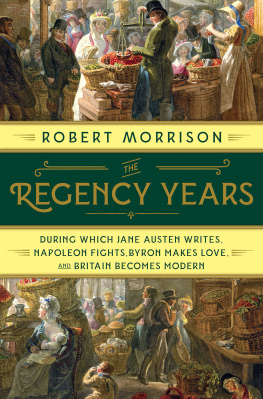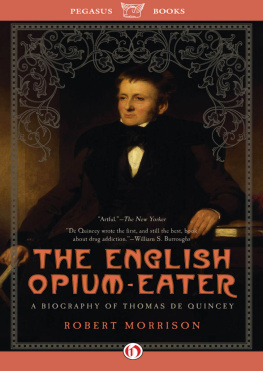
Table of Contents
In Memory of Dorothy Dunnett
19232001
What brought us both here? A joyous adventure.
The Unicorn Hunt, Chapter 23
AUTHORS NOTE
THE purpose of this Companion is to enhance the readers appreciation and enjoyment of the novels of Dorothy Dunnett. Arranged alphabetically, it aims to provide an easily accessible but solidly researched background to the historical characters, allusions and references which underpin the fiction of the Lymond Chronicles and the House of Niccol series. As with Volume I, the Companion does not attempt to analyse aspects of the Renaissance which are outwith the novels.
What has been most rewarding has been the opportunity to follow events and individuals from the latter half of the fifteenth century to the mid-sixteenth and to see how closely woven are the bloodlines of the major families. Historic characters who make an appearance in the House of Niccol often turn out to have descendants who interact with the fictional Crawford of Lymond. In addition to new maps, this volume includes select genealogies of the important families who feature in both series. Dorothy Dunnetts novels are unlike anything else I have ever read, and her characters are as vibrant and alive as the descriptions of the period they inhabit. The reason is undoubtedly the extensive and meticulous research which has gone into their creation. There has not been time to trace every reference and allusion, but for the first time what has been created, in consultation with Dorothy Dunnett, is a bibliography of the sources consulted for both the Lymond and Niccol series. From general histories to the most exacting of primary sources, those readers who wish to understand more about the politics, economics, literature or music of the novels than can be distilled within these pages may be encouraged to do research of their own, knowing that in the calendars of state papers, or the collections of poetry, they may find one of Lymonds allusions or quotes, or one of Niccols schemes, which Dorothy had plucked from obscurity, and which has been hanging in the air ever since.
The layout and style of the Companion is similar to that of Volume I. Cross references to other items within the book are emboldened; cross references to items appearing in Volume I are asterisked, and the two volumes are best kept side by side. Quotations and phrases in foreign languages are indexed under their first words as they appear in the novels; references and allusions are indexed under their main subject. The names of characters who appear in the dramatis personae of the novels are capitalised at the head of their biographies, but historic or mythic individuals who are only alluded to are given in lower case. As with its predecessor, one-word titles have been allocated to each of the novels, and a key to these abbreviations has been included. Two new abbreviations, HN and LC, indicate that the subject of the entry may be of importance throughout both series of novels, rather than the entry referring to a comment or event in a particular chapter of a particular novel. Again as before, part and chapter numbers are given with the book references, rather than page numbers. Where the subject of an entry appears several times, then the book reference only is given. When characters or subjects appear in more than one book, the one in which they are first mentioned is listed. Unless otherwise indicated, all translations are by Dorothy Dunnett. Biographies and other entries contributed by Dorothy Dunnett are indicated by her initials.
This Companion has been hard work, but tremendous fun to research and compile. However, the project would not have been possible had it not been for the full co-operation and participation of Dorothy Dunnett, who has allowed me unlimited access to her library and research notes. She has contributed many of the biographies, representing the formulation of decades of research; and in addition to these, her light touch on other entries from Herpestes Ichneumon to puffins has made this book what it is.
Sadly, Dorothy fell ill shortly after completing work on this volume, and she died on 9 November 2001.
She is sorely missed.
ELSPETH MORRISON
Edinburgh, January 2002

ACKNOWLEDGEMENTS
THANKS, first and foremost, must go to Dorothy,
whose intelligence, humour and generous spirit
have made this book a labour of love.
Thanks also to Richenda, who has
helped make sense of it all.
FOREWORD
THIS, like the first Companion, is a treasure chest of historical facts. There is no fiction in it. It deals with jokes and paintings and poetry, with wars and sea battles and tournaments, with flamboyant rogues and explorers, with pioneers in trade and invention, with men of faith and women of power and character, all of whom lived within the span of one hundred years from the middle of the fifteenth to the middle of the sixteenth century while Europe and the lands on its fringes were experiencing the great explosion of art and culture and learning known as the Renaissance. They all have a place here because they make up the worlds of Lymond and Niccol, the two fictitious men whose story, after forty years, has just drawn to a close.
The character of Francis Crawford of Lymond, an international mercenary leader and a Scot, was created in 1960, and his life over ten years was detailed in six long, linked novels. The next series, by contrast, dealt with Nicholas vander Poele or de Fleury, a dyeyard apprentice in Flemish Burgundy, and eight consecutive volumes followed his developing merchant career in countries ranging from Cyprus to Iceland to Persia. Fictionally and historically, the two series are connected and form a cycle of fourteen books.
Elspeth Morrison devised the initial Companion to satisfy the curiosity of all those who wished to trace or have translated the quotations and allusions in the novels, and to affirm the real historical base for the story. She dealt with the six books of the Lymond Chronicles and those five House of Niccol novels then published, avoiding, with tact, any historical fact that might give away the line of the plot, and the final resolution of the entire work.
The intention was to confine this second Companion to the final three Niccol novels, which are substantial. Then it seemed only fair to provide some of the historical links between the two series: to show how Lymonds Ivan the Terrible was the grandson of Nicholass Ivan the Great, how Nostradamus in one was the grandsire of Nostradamus the prophet in the other; how the family of Lennox and Aubigny descended through the missing years between the two tales.
It then struck us both that there was a great deal in the Lymond and early Niccol books that had escaped the first volume, and ought to be packed in. It was packed in. Next, a decision was made which has made this volume rather different from the first, and perhaps different from most of its kind.
Great historical figures become the subject of books and monographs and appear in international biographies. Others are not so lucky. There are either no biographies for them at all, or those that exist may be published in foreign documents and periodicals, and can be contradictory.
The Niccol novels in particular are about a cross-section of society. Much of the latter part of the story takes place in Scotland, among the genuine merchants of Berwick and Edinburgh, the skippers of Leith, the burgesses and workmen of the towns and the foreigners who settled there or competed with them. In the case of such little-known men and women, the research has been my own. Hence, among the wealth of Elspeths enticing entries, I have been allowed to intrude the more leisurely life stories of Anselm Adorne and Wattie Bertram and Pael Benecke, of the Sinclairs and the Prestons and the Berecrofts family, which have played such a large part in the novels.
Next page








